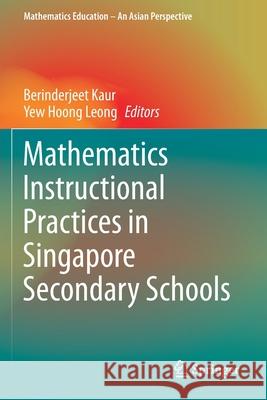Mathematics Instructional Practices in Singapore Secondary Schools » książka
topmenu
Mathematics Instructional Practices in Singapore Secondary Schools
ISBN-13: 9789811589584 / Angielski / Miękka / 2022 / 364 str.
Mathematics Instructional Practices in Singapore Secondary Schools
ISBN-13: 9789811589584 / Angielski / Miękka / 2022 / 364 str.
cena 401,58
(netto: 382,46 VAT: 5%)
Najniższa cena z 30 dni: 385,52
(netto: 382,46 VAT: 5%)
Najniższa cena z 30 dni: 385,52
Termin realizacji zamówienia:
ok. 22 dni roboczych.
ok. 22 dni roboczych.
Darmowa dostawa!
Kategorie:
Kategorie BISAC:
Wydawca:
Springer
Język:
Angielski
ISBN-13:
9789811589584
Rok wydania:
2022
Ilość stron:
364
Waga:
0.50 kg
Wymiary:
23.39 x 15.6 x 1.91
Oprawa:
Miękka
Wolumenów:
01
Dodatkowe informacje:
Wydanie ilustrowane











